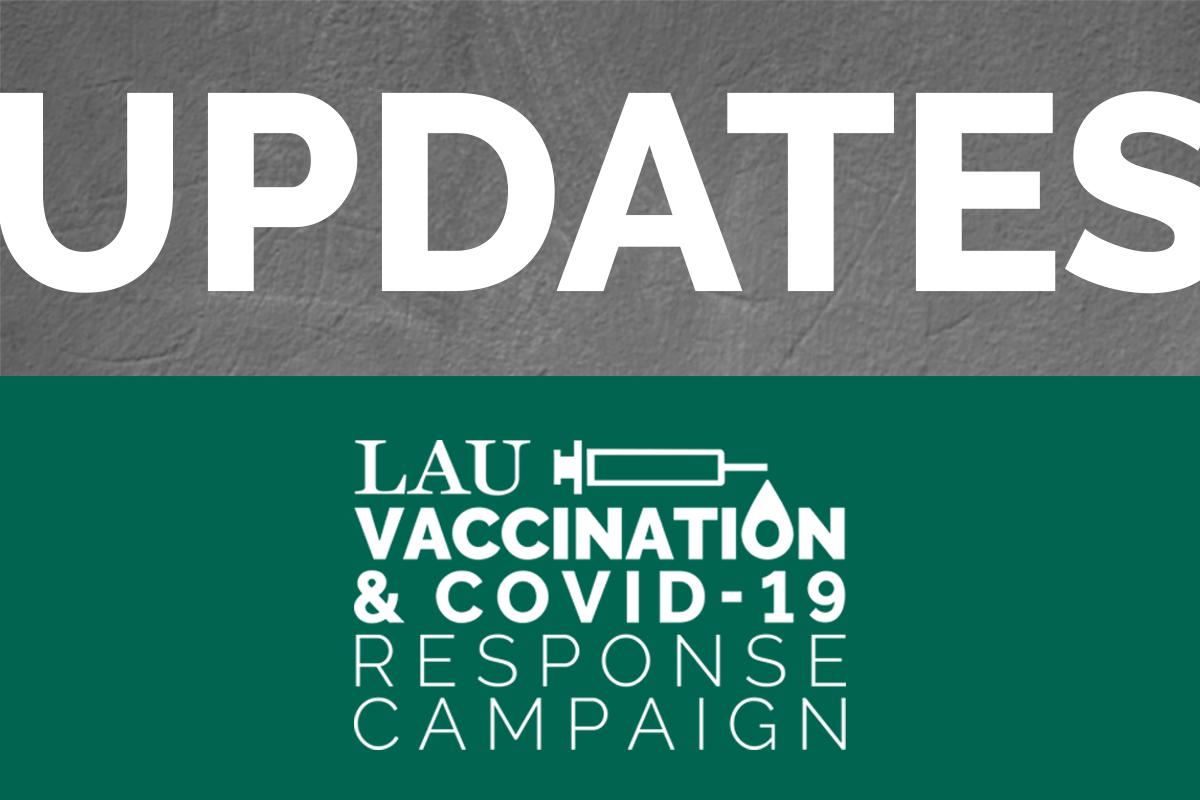COVID-19 Vaccine: Fact vs Fiction – Part III
Dr. Mirvat El-Sibai addresses questions on the immunity and extent of the protection provided by the vaccines.
Associate Professor of Cell and Molecular Biology at the School of Arts and Sciences, and 2017 recipient of the Shoman award, Mirvat el Sibai, talks about the duration of immunity obtained from the vaccine, the possible advantage of administering different vaccines to a population, and the prospect of resuming normal life.
How long is the immunity provided by the vaccine expected to last?
The whole concept of vaccination relies on the fact that the human body has an immunological memory. This memory is an adaptive mechanism, acquired through evolution, that helps our bodies respond faster to previously caught pathogens and eliminate them more effectively.
Recent studies have shown the presence of immunological memory for COVID-19 up to eight months post-infection. While the antibodies against the spike protein of the virus begin to decrease six months post-infection, the memory cells were increasingly abundant for up to eight months. Thus, even if the number of neutralizing antibodies decreases, we still have the cells that can produce them again to mount a faster, more powerful attack.
These results are very promising and not surprising since immunological memory for the Severe Acute Respiratory Syndrome (SARS), which is part of the same family of coronaviruses as COVID-19, was found in humans 17 years post-infection.
Therefore, even if the kinetics of immunity differ between individuals, the immunological memory for COVID-19 is likely to last for a long time provided one follows up with the booster shot should it be necessary, as is the case for the flu shot. Finally, even if the immunological memory does not last as long in a small section of the population, herd immunity reached by mass vaccination should protect them from becoming re-infected.
When will we reach a stage where precautionary measures are no longer necessary?
While we might reach that stage in the long-term, it does not seem like it will happen any time soon. The vaccines are designed to protect an individual from life-threatening complications of COVID-19 but it is still unclear if they also prevent transmission. Therefore, it is critical that we keep practicing social distancing and wear a mask.
Will the fact that a population is likely to receive different vaccines, with varying percentages of efficacy, impact the level of protection?
Using different vaccines, each with a varying efficacy, in the same population might sound like a bad idea but it can actually be a blessing in disguise. Keeping in mind that the virus is mutating and forming new strains, each vaccine works on a different viral target through a unique mode of action. This diversity in vaccines provides a sort of a backup to ensure that weakness to one vaccine does not affect the whole population. Clinical trials are also underway to establish whether mixing different vaccines might yield a significant synergistic effect.
One point, often overlooked during the vaccination process, is the heterogeneity of the population. Age, for example, might play a role in the response of different age groups to the same vaccine.
At such an early stage in the vaccination rollout, we cannot make certain assumptions about the implications of using different vaccines in the same population. However, data is emerging every day and scientists are on an ongoing mission to maximize the efficacy of vaccination on the general wellbeing of the people.
What contraindications do the COVID-19 vaccines have?
The only contraindication to mRNA vaccines we are aware of is anaphylaxis or a severe allergic reaction to the vaccine. This could either manifest after a while as a reaction to any component of the vaccine, or it can appear as an immediate reaction upon vaccination. The latter is attributed to hypersensitivity to polyethylene glycol found in the vaccine or to polysorbate, the hypersensitivity to which can be cross-reactive to polyethylene glycol. Fortunately, trained allergist-immunologists can help ensure that individuals are vaccinated at the right time and under safe circumstances to prevent allergic reactions of any severity.
Because most contraindications are not permanent, the vaccine can then be administered to vulnerable individuals at a later time when the specialized physicians deem it safe.
Is the COVID-19 vaccine likely to become a one-off inoculation with a booster (such as MMR, polio, etc.) or annual /seasonal like the flu shot?
With the emergence of new variants of COVID-19 in the United Kingdom and South Africa, it is becoming more obvious that the virus behaves like the flu in which mutations appear regularly, creating a need for booster shots. Unlike the flu, however, the rate of mutation for COVID-19 is much slower, suggesting that booster shots might not be required.
Additionally, all the vaccines have been reported to provide immunity against the new strains with varying degrees. One pharmaceutical company has already started modifying its original vaccine based on the South African variant so that it may potentially serve as a booster shot, if necessary.
In any case, given the funding as well as the thorough research being conducted, it is clear that companies have accounted for the possibility of requiring boosters and will provide them accordingly. It is important to note that booster shots will not require as much time as the original vaccines to be developed and will be made available regularly based on the circumstances.
This interview has been edited and condensed for the sake of clarity.
